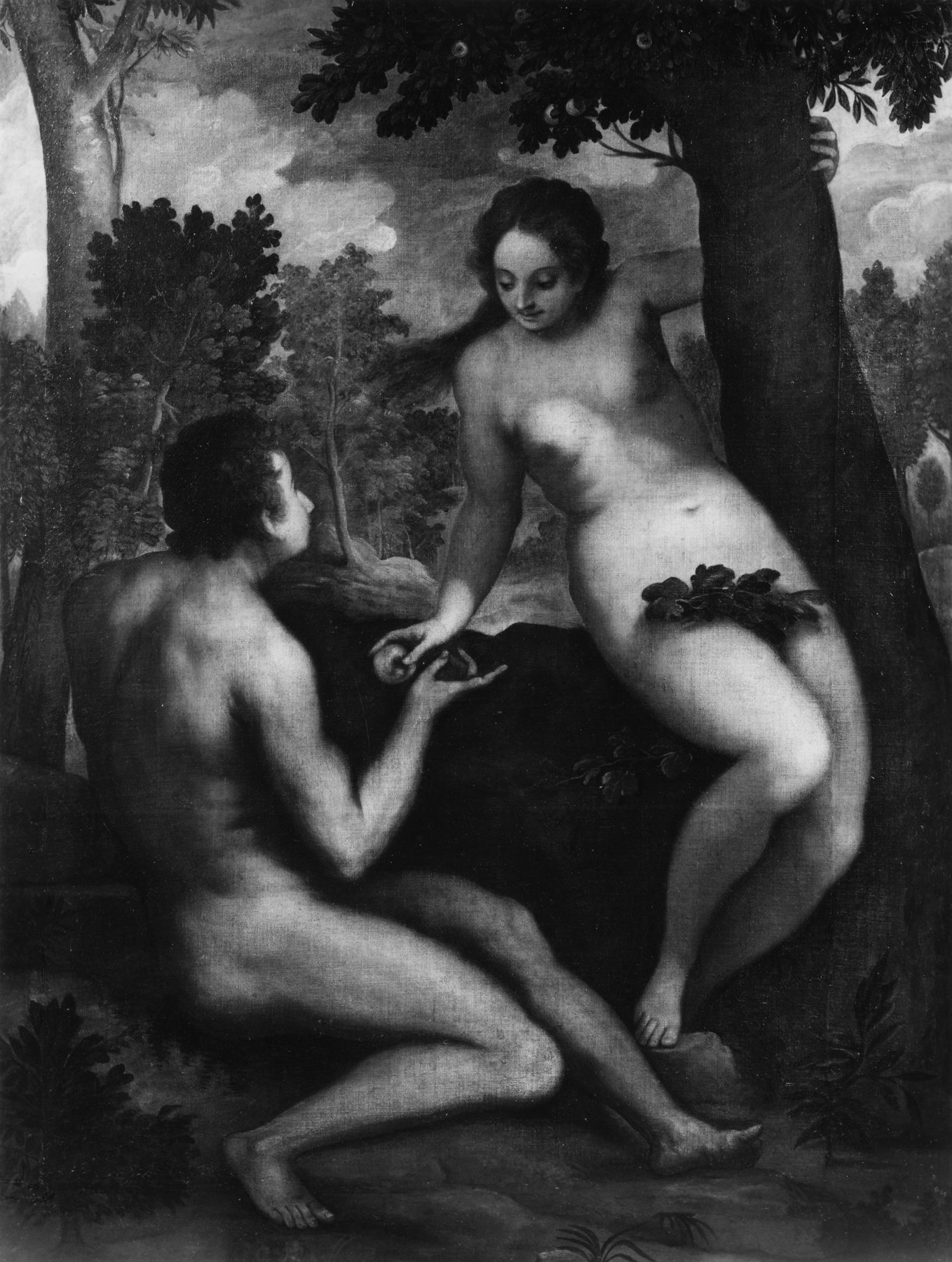The Fall of Man
(Renaissance Europe )
This depiction of the traditional subject of the "Fall of Man" in the Garden of Eden is extremely unusual because there is no serpent represented. Eve is represented as particularly sensuous and aggressive in offering the fruit to Adam, who does not take the fruit but who gestures in a way that indicated that he is arguing with Eve. Some theologians insisted that Eve was much more to blame than Adam; this painting responds to that line of thinking.
Pietro Mera, to whom the painting has now been attributed, was one of the many Flemish painters working in Venice and surrounding art centers around 1600. Their sensitivity to landscape was greatly appreciated. The lushness of the landscape here reflects the tastes of his homeland.
Provenance
Provenance (from the French provenir, 'to come from/forth') is the chronology of the ownership, custody, or location of a historical object. Learn more about provenance at the Walters.
William T. / Henry Walters Collection, Baltimore, prior to 1909 [mode of acquisition unknown]; Walters Art Museum, 1931, by bequest.
Conservation
| Date | Description | Narrative |
|---|---|---|
| 1/1/1900 | Examination | examined for condition |
| 4/30/1970 | Treatment | examined for condition; inpainted; other |
| 6/29/2009 | Examination | examined for condition; other |
| 9/1/2009 | Treatment | cleaned; other; varnish removed or reduced |
Measurements
H: 63 3/8 x W: 47 1/4 in. (161 x 120 cm); Approx. surviving original fabric H: 55 7/8 x W: 41 3/4 in. (142 x 106 cm)
Credit Line
Acquired by William T. or Henry Walters, before 1909
Location in Museum
Accession Number
In libraries, galleries, museums, and archives, an accession number is a unique identifier assigned to each object in the collection.
In libraries, galleries, museums, and archives, an accession number is a unique identifier assigned to each object in the collection.
37.576








